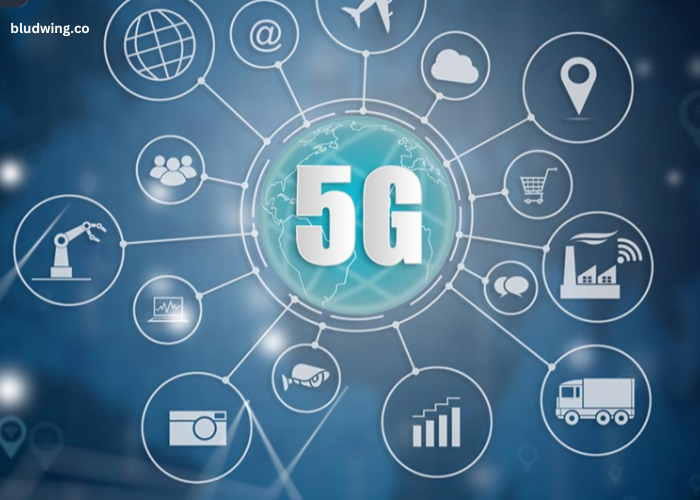As the world begins to embrace the fifth generation of wireless technology—5G—many are already asking, “What’s next?” While 5G has already started to transform the way we connect, communicate, and innovate, it’s just the beginning. 5G promises faster speeds, lower latency, and increased connectivity, but the future holds even more exciting possibilities. In this article, we will explore the far-reaching impact of 5G and look ahead to what comes after, focusing on the future of connectivity and the next generation of technological advancements.
Key Points:
- 5G is transforming industries, offering faster speeds, lower latency, and increased network capacity.
- Beyond 5G, we can expect the rise of 6G and advanced technologies that will further revolutionize connectivity.
- 5G and its successors will drive innovations in fields like AI, autonomous vehicles, and IoT.
How is 5G Changing the World Today?
Before diving into what comes after 5G, it’s important to recognize the immense impact this technology is having right now. 5G is opening up new possibilities for industries, businesses, and consumers alike. Its benefits are already being felt across various sectors, from healthcare to entertainment, transportation to manufacturing.
1. Transforming Communication and Connectivity
5G is drastically improving mobile communication by offering faster data speeds, enhanced reliability, and reduced latency. As a result, users are experiencing quicker downloads, smoother video streaming, and better overall connectivity, even in crowded areas. For example, downloading large files, such as movies or games, will be done in seconds, a major improvement over the delays of 4G.
For businesses, 5G is providing a robust platform for cloud computing, video conferencing, and collaboration tools that require stable, high-speed networks. The increased capacity of 5G networks ensures that communication remains uninterrupted, even with the increasing number of connected devices.
2. Revolutionizing Healthcare
5G has already begun to transform the healthcare industry by enabling telemedicine and remote patient monitoring. Surgeons can perform surgeries remotely using robotic systems that communicate in real time over 5G networks. Additionally, wearables and other health tracking devices can send data instantly to healthcare providers, improving patient care and helping prevent potential health issues before they escalate.
With the advent of 5G, healthcare will become more accessible to people in rural or underserved areas, allowing them to receive timely consultations and medical attention without needing to travel long distances.
3. Impacting Transportation and Smart Cities
5G technology is also paving the way for autonomous vehicles, where real-time communication between vehicles and infrastructure is essential for safe navigation. With 5G’s low latency and fast data transfer, self-driving cars can respond to their surroundings much faster than ever before, reducing the risk of accidents and improving overall safety.
In smart cities, 5G will be instrumental in improving urban infrastructure. Sensors embedded in roadways, public transportation systems, and buildings can communicate with each other in real time, optimizing traffic flow, reducing energy consumption, and improving public safety. This will make cities more efficient and livable for everyone.
What’s After 5G: The Next Frontier of Connectivity
While 5G is still in its early stages, the world is already looking ahead to the next generation of connectivity: 6G. Just as 5G has revolutionized wireless communication, 6G is expected to take these innovations even further, providing unprecedented speeds, low latency, and new opportunities for technological advancements.
1. The Promise of 6G Technology
Although 6G is still in its conceptual phase, experts are already predicting its capabilities. The most exciting feature of 6G is its potential to provide data speeds that are up to 100 times faster than 5G. This means that applications requiring massive data processing, like holographic communications or immersive VR experiences, will become a reality.
6G will also bring ultra-low latency, likely approaching near-instantaneous communication. With 6G, we could see an evolution of AI systems that respond almost instantly, enabling everything from intelligent transportation systems to real-time language translation that’s as natural as speaking with someone face-to-face.
2. Artificial Intelligence (AI) and 6G Integration
The integration of AI with 6G technology will further elevate how we interact with the digital world. AI-driven 6G networks will be able to predict demand and optimize network performance, reducing congestion and ensuring that users experience consistent speeds, even in busy areas.
Additionally, AI could enable personalized and adaptive experiences. For instance, 6G-powered networks could anticipate what content you want to access next or adjust communication quality based on your location and preferences. The seamless integration of AI into future networks will make our digital interactions more intuitive and efficient.
3. The Rise of the Internet of Everything (IoE)
While 5G supports the Internet of Things (IoT), 6G is expected to expand this concept to the Internet of Everything (IoE). This means not just connecting smart devices, but creating an ecosystem where everything, from cities and transportation systems to healthcare and education networks, is interconnected.
With 6G, billions of devices will be able to communicate simultaneously with each other, providing valuable real-time data that can improve everything from traffic patterns to healthcare outcomes. The rise of IoE will lead to smarter homes, more efficient energy usage, and better quality of life for people around the world.
What Technologies Will Be Powered by 5G and Beyond?
The power of 5G and beyond will enable groundbreaking innovations in various technologies. Some of the key areas that will benefit from these advancements include:
1. Autonomous Vehicles and Smart Transportation
Autonomous vehicles, drones, and other forms of smart transportation are already benefiting from 5G’s low latency and fast data transmission capabilities. With 6G, we can expect even more advanced features in autonomous transportation, such as fully integrated traffic systems, predictive route management, and real-time communication between vehicles, pedestrians, and infrastructure.
2. Holographic Communications and Virtual Reality
Holographic communications, which are currently in the research phase, will likely become a reality with 6G. This will allow for lifelike 3D video calls where participants can interact as if they were in the same room. Additionally, virtual reality (VR) and augmented reality (AR) will become even more immersive, with less reliance on wired equipment and more seamless experiences.
3. Smart Healthcare and Precision Medicine
The combination of 5G and beyond will lead to the rise of smart healthcare solutions. Real-time monitoring of patients through wearables, enhanced telemedicine, and AI-driven diagnostics will revolutionize patient care. With 6G, advanced robotics and AI will be able to assist doctors in performing surgeries remotely with precision, providing healthcare access to even the most remote locations.Challenges to Overcome in 5G and Beyond
While the future of 5G and beyond holds tremendous promise, there are several challenges that need to be addressed in order to fully realize their potential.
1. Infrastructure and Deployment Costs
The deployment of 5G networks already requires substantial investment, and 6G will likely require even more advanced infrastructure. Governments and telecommunications companies will need to collaborate to ensure that the necessary infrastructure is in place for these technologies to succeed.
2. Cybersecurity Concerns
As the number of connected devices and data-sharing increases, so do the cybersecurity risks. Protecting sensitive data and ensuring secure communication across 5G and future 6G networks will be critical. Advanced encryption, secure access protocols, and AI-powered security systems will be essential to safeguarding the integrity of these networks.
3. Global Accessibility and Equity
Ensuring that 5G and beyond are accessible to people worldwide, including those in rural and underserved areas, will be a challenge. Expanding network coverage and ensuring affordability will be important to make these technologies accessible to everyone, regardless of location or socioeconomic status.
Conclusion: Embracing the Future with 5G and Beyond
The power of 5G is already transforming the way we live, work, and communicate. However, it’s clear that this is just the beginning. With the advent of 6G and other advanced technologies, the future of connectivity holds exciting possibilities. From AI integration to the rise of the Internet of Everything, 5G and beyond will pave the way for innovations that will change our world in ways we can’t yet fully comprehend.
As we look toward the future, we must ensure that we address the challenges of infrastructure, cybersecurity, and global equity to make sure that these revolutionary technologies benefit everyone. The journey of 5G and beyond is just beginning, and the potential for innovation is limitless.
FAQ’s
1. What is the difference between 5G and 6G?
5G offers faster speeds and lower latency than 4G, while 6G will provide even faster speeds, ultra-low latency, and more advanced applications such as holographic communication and AI integration.
2. How will 5G impact the healthcare industry?
5G enables remote surgeries, telemedicine, and real-time patient monitoring, improving healthcare access and quality of care.
3. What industries will benefit from 5G and beyond?
Industries such as healthcare, transportation, entertainment, and manufacturing will experience major benefits from 5G and future generations of connectivity.
4. Will 6G support autonomous vehicles?
Yes, 6G’s advanced connectivity will enhance the capabilities of autonomous vehicles, providing real-time data sharing and improved safety features.
5. What challenges does 5G and beyond face?
Challenges include the cost of infrastructure deployment, cybersecurity risks, and ensuring global accessibility and equity for these technologies.




